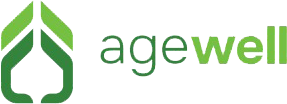
Choosing the right caregiver for an elderly loved one requires matching medical needs, daily support, personality, and financial realities for safer care and a better quality of life. This guide outlines a step-by-step process to assess needs, compare caregiver types, hire, vet, manage contracts, and sustain relationships. It includes practical checklists for Activities of Daily Living (ADLs) and Instrumental Activities of Daily Living (IADLs), interview questions, and hiring workflows. Age Well Now offers a Care Assessment Tool and Find Senior Care directory, recommended at key decision points.
Assessing Senior Care Needs
A needs assessment defines care scope by measuring functional ability, medical complexity, and senior preferences, determining hours, caregiver skillset, and care model. Start with ADLs and IADLs to quantify dependence and identify safety risks, then layer in medical conditions, cognitive status, mobility, and lifestyle. A documented assessment yields a prioritized care plan informing hiring, scheduling, and agency/training needs. Use a structured care assessment tool to translate results into recommended caregiver types and local provider matches.
This section offers a compact ADL/IADL checklist to score current capability and flag immediate attention areas. Use it to create a baseline and revisit every 30–90 days or after health changes.
- Identify dependent ADLs using direct observation and caregiver/family reports.
- Rate IADLs to determine whether specialized services (medication management, bill paying) are needed.
- Note medical conditions and behavioral risks that require trained staff or supervision.
- Record personality, routines, and cultural preferences to guide compatibility matching.
Completing this assessment clarifies how caregiver types align with documented needs for interviews and hiring.
Understanding Activities of Daily Living (ADLs)
Activities of Daily Living (ADLs)—bathing, dressing, toileting, transferring, continence, and eating—directly indicate a senior’s functional independence and safety. ADL deficits increase caregiver time, requiring hands-on assistance and personal care experience. Scoring ADLs helps estimate direct care hours and whether enhanced supervision or clinical support is necessary.
Key red flags include rapid decline (weeks), new falls, or refusal of assistance—these demand immediate re-assessment and potentially higher-level care.
Evaluating Instrumental Activities of Daily Living (IADLs)
Instrumental Activities of Daily Living (IADLs) cover tasks supporting independent living: medication management, shopping, transportation, meal preparation, housekeeping, and finances. IADL deficits often indicate a need for caregiver support focused on organization and supervision, rather than personal care, and may be serviced by companion caregivers or home care aides. An IADL checklist helps differentiate tasks for companion caregivers versus certified aides or agency oversight.
Specialized Medical Conditions and Caregiver Selection
Conditions like dementia, Parkinson’s, stroke, complex medication, and mobility impairment require specialized caregiver skills. Dementia care needs training in behavioral de-escalation; Parkinson’s care benefits from mobility assistance and fall prevention. Include specific screening questions and prioritize candidates with demonstrable experience or certifications. Matching caregiver specialization to a senior’s medical profile reduces risk and improves quality of life.
Personality and Lifestyle Influence on Care Needs
Personality fit and lifestyle alignment—cultural background, routines, social preferences, communication style—strongly affect caregiver retention and senior well-being. An active senior needs a caregiver comfortable with community activities; a homebound senior may prioritize gentle companionship. During interviews, use behavioral prompts and scenario questions to assess temperament, flexibility, and shared interests for long-term compatibility. Personality matching reduces turnover and improves care plan adherence. Positive coping strategies can significantly aid in enhancing caregiver effectiveness.
Types of Senior Caregivers and Agencies
Choosing between private caregivers, in-home agencies, respite, adult day care, and assisted living depends on needs, budget, and desired oversight. Each option offers trade-offs in screening, liability, continuity, cost, and backup. Agencies provide pre-screening, payroll, insurance, and backup. Private caregivers offer lower rates and continuity but require family management of hiring, taxes, and training. Understand these distinctions to match service structure to complexity, schedule, and risk.
| Provider Model | Screening & Backup | Typical Strength | Common Drawback |
|---|---|---|---|
| In-home Care Agency | Pre-screens, training, backup caregivers | Reliable replacement and compliance support | Higher hourly rates and agency fees |
| Private Caregiver (Direct Hire) | Family-managed checks, variable training | Cost-effective and consistent caregiver | Family handles payroll, taxes, and liability |
| Respite Care / Adult Day Care | Program-managed staff, scheduled sessions | Social engagement and caregiver relief | Limited hours and transportation needs |
| Assisted Living / Skilled Facility | Licensed staff, clinical oversight | 24/7 care and clinical services | Higher cost and less home-like environment |
Key Caregiver Specializations
Prioritize caregivers with certifications and experience aligned to needs—dementia training, medication administration, mobility-assist, CNA/HHA, and CPR/first-aid. Specializations increase availability risk and costs but improve outcomes. Ask for documentation, prior work examples, and scenario-based responses to verify claims.
Hiring and Vetting a Senior Caregiver
Hiring is a five-step process: define the job, recruit/screen, interview, run background/reference checks, and onboard with a care plan and trial. A clear job description narrows applicants; structured interviews and reference checks surface reliability; background checks reduce risk. Use a probationary trial shift to validate performance before long-term commitment.
| Vetting Step | What to Verify | Recommended Action |
|---|---|---|
| Identity & Work History | SSN/name verification, past employers | Use formal ID and employment verification services |
| Criminal & Driving Records | State checks, DUI or violent offenses | Run national/state background checks with consent |
| References | Past family/employer feedback | Ask about punctuality, caregiving skills, and professionalism |
| Certifications | CNA/HHA/CPR licenses | Request copies and verify through issuing bodies |
| Trial Shift | Real-world caregiving tasks | Schedule paid trial with checklist and family observation |
Red Flags When Hiring a Caregiver
Red flags include inconsistent employment, evasive answers, refusal of background checks, poor references (reliability/safety), and trial shift issues (hygiene, inattentiveness, inappropriate behavior). Other signs are frequent short-term jobs, lack of credentials, or unwillingness to follow care plans. If red flags appear, pause hiring, consider agencies, or implement strict probation.
Financial and Legal Factors in Caregiver Hiring
Budgeting requires understanding cost models (hourly, agency fees, live-in salaries), hours, and expenses like taxes, benefits, and insurance. Payment options include private pay, long-term care insurance, Medicaid waivers, and veteran benefits; each has eligibility rules. A caregiver contract should define scope, hours, pay, overtime, confidentiality, termination, and liability to reduce disputes.
| Cost Category | Typical Range / Example | Notes |
|---|---|---|
| Private caregiver hourly | $X–$Y per hour (region-dependent) | Direct hires may be lower but require payroll handling |
| Agency hourly + fees | Higher hourly rate + agency surcharge | Includes screening, payroll, and backup coverage |
| Live-in caregiver | Daily stipend or weekly salary | Often less per-hour but includes room/board considerations |
| Additional costs | Taxes, worker’s comp, training | Family may need payroll/payroll service for compliance |
Caregiver Contract and Employment Agreement Essentials
A caregiver contract should define scope, hours, pay, overtime, leave, confidentiality, termination, emergency protocols, and liability. Include provisions for documentation, performance review, and a probationary period. For private hires, specify payroll responsibilities and recommend consulting payroll/HR services for tax/employment law. Clear contracts reduce misunderstandings and create enforceable expectations.
Building and Maintaining a Successful Caregiver Relationship

Sustaining a productive caregiver relationship requires clear communication, documented care plans, regular reviews, and conflict resolution. Establish communication cadence—daily shift notes, weekly family check-ins, scheduled reviews—using shared logs/apps for medications, incidents, and activities. A living care plan, updated collaboratively, ensures alignment and adapts to changing needs. Address issues with a stepwise correction plan: verbal feedback, written expectations, probation, and, if needed, replacement.
Effective Communication Strategies
Set explicit check-in routines and documentation standards: end-of-shift notes, weekly family summaries, and a single contact for schedule changes. Use structured templates for incident reports and medication logs. Encourage open feedback via monthly family-caregiver meetings. Clear communication protocols minimize misunderstandings and provide records for performance or emergency response.
Developing and Updating a Personalized Care Plan
A personalized care plan includes medical info, ADL/IADL needs, routines, emergency contacts, medication schedules, mobility, and psychosocial goals. Update it regularly (30, 90 days, annually) or after major health changes. Co-create the plan with the caregiver for feasibility and ownership; store accessible copies. Use measurable goals to evaluate effectiveness and adjust staffing/training.
Addressing Challenges and Resolving Conflicts
Address challenges with a documented, stepwise approach: collect evidence, hold a private discussion for corrective actions, document changes, and schedule follow-up. Escalate to replacement or agency intervention if no improvement. Use neutral language and specific examples; offer training for skill gaps. Maintain records of conversations and steps.
Current Trends and Statistics in Senior Caregiver Selection (2025)
In 2025, the aging population and workforce dynamics increase demand for home-based care, impacting availability and rates. This necessitates early planning, flexible scheduling, and contingency options. Caregiver shortages drive creative models: intergenerational programs, technology-assisted monitoring, and hybrid in-person/telecare. Families face longer lead times for specialists and a greater premium on backup plans/agency partnerships. Understanding these trends sets realistic expectations for cost, hiring time, and compromises.
Growing Senior Population and Caregiver Demand
Demographic shifts increase the ratio of care recipients to caregivers, raising demand and lengthening wait times for specialized services. Market pressure leads to higher hourly rates, competition for experienced staff, and reliance on agency networks for backup. Families should plan earlier, maintain a candidate pipeline, and consider flexible schedules or blended care models to adapt to constrained supply.
Implications of the Caregiver Shortage for Families
Shortages drive higher costs, scheduling inflexibility, and fewer options for specialists. Mitigation includes cross-training, using respite/adult day services, and agency backup plans. Prioritize essential tasks in your care plan if staffing is constrained, and maintain a reserve budget for short-term agency coverage. Families planning for scarcity enjoy smoother transitions and better continuity.
New Care Models: Intergenerational Programs and Senior Care
Intergenerational programs and technology-assisted care expand engagement and reduce isolation, pairing seniors with younger volunteers or integrating digital monitoring. These models improve social outcomes and provide low-cost enrichment, especially for seniors with mild cognitive impairment or limited mobility. Families exploring novel models should evaluate local pilots, measure outcomes, and integrate successful approaches.
| Care Model | Core Benefit | Typical Use Case |
|---|---|---|
| Intergenerational Programs | Reduced isolation, social stimulation | Seniors needing companionship and activity |
| Technology-assisted Monitoring | Safety oversight, alerts | Seniors with fall risk or medication schedules |
| Adult Day Programs | Structured activities, respite for families | Families needing daytime support and social engagement |
- Assessment: Begin by documenting ADLs, IADLs, medical needs, and personality preferences.
- Comparison: Use structured tables and directories to compare caregiver models and providers.
- Hiring: Follow a stepwise hiring and vetting process—job description, interview, background checks, trial shift.
- Contracts & Management: Formalize agreements, maintain care plans, and schedule regular reviews.
Frequently Asked Questions
What qualifications should I look for in a caregiver?
Prioritize qualifications aligning with specific needs: CNA/HHA certifications for medical tasks, experience with conditions like dementia or mobility. Assess soft skills: empathy, patience, communication. Interviews and reference checks verify these.
How can I ensure a good fit between my loved one and the caregiver?
Consider personality and lifestyle compatibility. Ask candidates about their caregiving approach. Involve your loved one to gauge comfort. Conduct a trial period to observe interactions. Open communication about preferences helps establish a positive relationship.
What should I do if I notice issues with the caregiver's performance?
Address issues promptly. Document concerns. Meet privately to discuss observations, provide feedback, and set goals. If issues persist, consider probation or alternatives. Open communication is essential for resolving conflicts and ensuring quality care.
How can I manage caregiver costs effectively?
Understand pricing models and budget. Estimate hours and care type. Compare private caregiver and agency costs, factoring taxes/insurance. Consider mixed care options for balance. Explore financial assistance like Medicaid or long-term care insurance.
What role does family involvement play in caregiver relationships?
Family involvement is crucial. Regular communication ensures alignment on care plans. Provide caregivers insights into senior’s preferences, routines, and health changes. Support caregivers with feedback and recognition. This partnership enhances care quality and creates a stable environment.
How often should I reassess my loved one's care needs?
Reassess regularly (30-90 days) or after significant health changes. Assessments identify new challenges or shifts in capabilities. Use standardized ADL/IADL tools to track needs. Open dialogue with caregivers informs care plan updates.
What are the benefits of using technology in senior caregiving?
Technology enhances caregiving via improved communication, monitoring, and management. Tools like medication reminders, health tracking apps, and telehealth aid caregivers. Remote monitoring keeps families informed. These tools reduce stress, enhance safety, and promote senior independence, leading to better outcomes.
Find and Hire the Right Senior Caregiver with Age Well Now
Finding the right caregiver is essential for a senior loved one’s safety, comfort, and quality of life. Structured assessments and resources like Age Well Now’s Care Assessment Tool and Find Care Directory empower informed decisions. Exploring these tools streamlines your search and enhances the care experience. Start your journey today.

